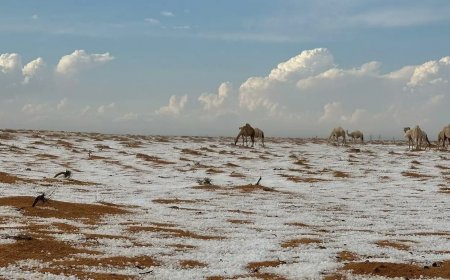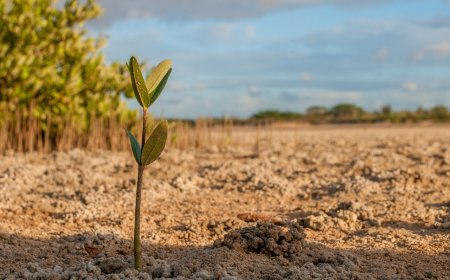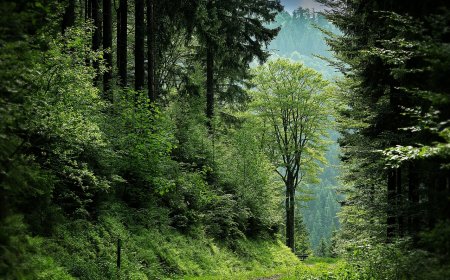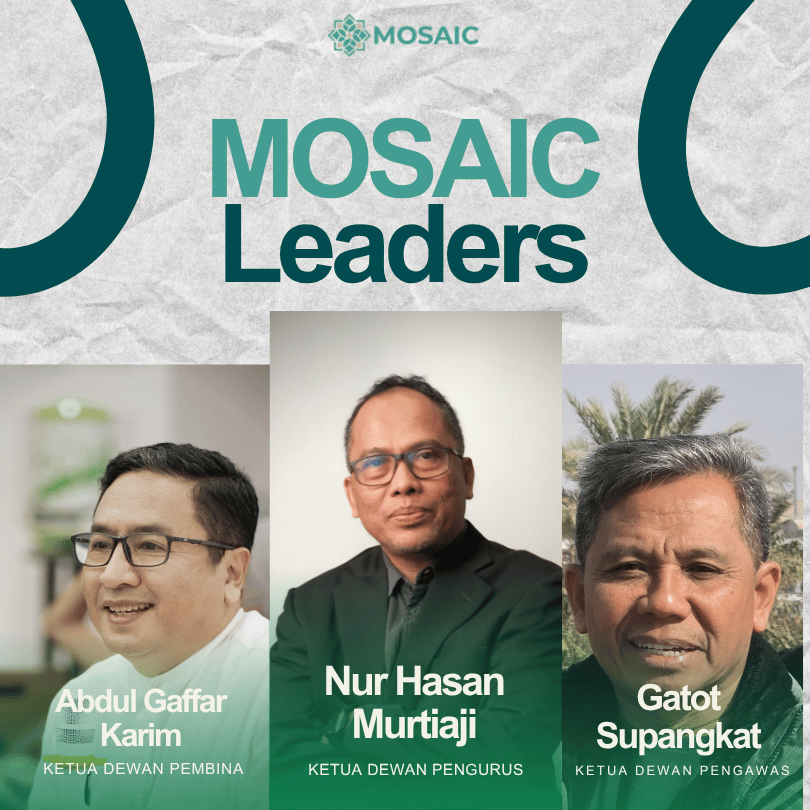Forest Waqf potential for carbon trading
Forest became the carbon credit sought by large companies given its low emission absorption.
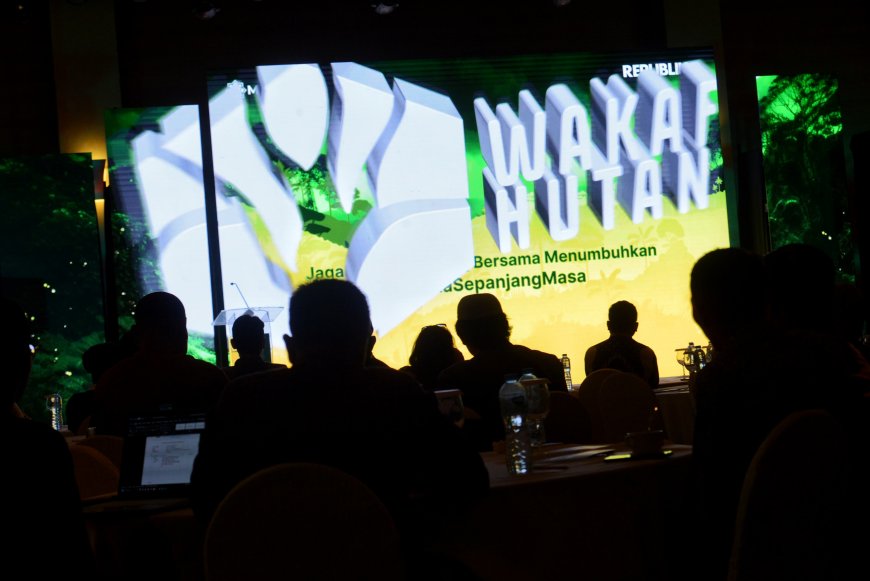
MOSAIC-INDONESIA.COM, JAKARTA -- The Indonesian Carbon Exchange, which was recently released by the Indonesia Stock Exchange (BEI) on September 26, 2023, opens up opportunities for community-managed forests, including waqaf forests. The BEI revealed that waqaf forests have the potential to generate carbon credits even in premium categories.
According to the Financial Services Authority (OJK), the trading value on Indonesia's carbon exchange reached Rp 30.7 billion with a trading volume of 490,716 tonnes of carbon dioxide equivalent (CO2e). This value was recorded throughout September 26, 2023 to November 30, 2023. The transaction is still limited to the energy sector and has not yet penetrated the forestry sector, especially community-managed ones.
Carbon credits come from reducing emissions from corporate projects such as turbine construction, emissions reduction, methane atar greenhouse substance reduction and forest restoration. Through green projects, companies can submit land absorption calculations to internationally recognized carbon credit verification agencies. After obtaining certification of a number of carbon credits, the carbon credits will be recorded in the depository or institution responsible for storing the carbon credits for later trading on the carbon exchange.
Executive Vice President Business Development of Indonesia Stock Exchange (BEI) Ignatius Denny Wicaksono said that carbon exchanges are a mitigation effort that companies are making to reduce emissions in the world. According to him, the forest waqf (forest endowment) program also has the goal of reducing emissions according to Net Zero 2060.
“The forest waqf wants to keep the pace of carbon credits with emissions credits with the forest. So I see this as an interesting thing, if it can be passed on to carbon credits,” he said after the Waqaf Hutan Talkshow held by Republika with MOSAIC in Jakarta, Thursday (30/11/2023).
He continued, if the forest could produce carbon credits, then the benefits or value of the waqf could be given back to the beneficiaries. Moreover, the pricing or pricing of forest carbon credits is attractive to buyers.” Pricing of carbon credits is attractive. Buyers see higher quality arbsorb (absorb) emissions. Then there are additional benefits, supporting the surrounding environment, the social aspect of social assistance waqf, so forest waqf is very potential,” Denny explained.
Denny explained that large companies often seek premium carbon credits. One of its qualifications is carbon credits that absorb emissions more than reduce them. “Suppose the one that has come out of PLN. They have a Gas Power Plant. It's a gas guzzler, but how do you get carbon credits? Because compared to coal, it is certainly lower,” he said.
According to him, forests are becoming the carbon credits that large companies are looking for given their not small sequestration of emissions. The companies also see additional benefits of the forest such as biodiversity. Thus, the existence of such forests can further help the life of animals. Another benefit is the social benefits of forest management. “This waqf in Sudan definitely has social benefits,” he explained.
To that end, Denny said, the waqaf forest could actually fall into the premium category of carbon credits. “These forests can be issued carbon credits that fall into the premium carbon credit category. Therefore, I am very curious to wait for this forest waqf to publish its carbon trading so that we can later go to the international market,” he said.
Denny explained that justifying that carbon units are appropriate and properly measured is within the scope of the Ministry of Environment and Forestry. There are four validation or verification agencies (LVV) namely Succofindo, Mutu Agung Lestari, TUV Nord Indonesia and TUV Rheinland Indonesia that have been designated by the MFA. After obtaining verification, the manager can register with the BEI with the documents of the institution and the TIN. “The carbon credits are sold there,” he said.
As is known, at present Indonesia only has a carbon exchange under the auspices of the BEI. Given that the exchange is somewhat new, socialization continues to be resumed. The number of companies signing up for carbon exchanges, he said, is growing every day. Since last November 26, registrants reached about 60 companies.
A waqf forest is a forest that stands on the land of the waqf. Like other waqf assets, the management of the waqf forest is carried out by the nazir. In Indonesia, there are several waqf forests that are already standing such as the Aceh waqaf forest in Jantho, Aceh Besar, the Bogor waqf forest in Cibunian and the waqf forest of the Indonesian Ulama Assembly (MUI) in Sukabumi.
Professor of the Faculty of Economics and Business of the University of Indonesia Prof. Bambang Brodjonegoro explained that Indonesia is included in the three largest tropical forest countries in the world along with the Democratic Republic of Congo and Brazil. For this reason, these assets are utilized not only for the economy and the business world but also for society. The former finance minister explained that forests also have tremendous potential for carbon credits. Many multinational and global businesses need carbon credits. They want to appear as companies committed to green economic growth. According to Bambang, this economic opportunity could be exploited by the waqf forest.
The second benefit, Bambang explains, is that the waqf forest can be managed with an approach such as social forestry that can provide additional benefits to the community. He said that Indonesia is essentially an agrarian country. However, agricultural land, especially on Java Island, has begun to be eroded away. On the other hand, many peasant communities living near forests are on the brink of poverty. Because of this, there are still many cases of forest and land fires that occur as a result of land clearing by residents. According to him, social forestry schemes such as the waqf forest could be the solution to the problem. “By maintaining the sustainability of forests, agricultural activities can be carried out on crops of various fruits, such as avocado, durian, and others. Eventually the forest remains sustainable but people can have access to life,” he said.

